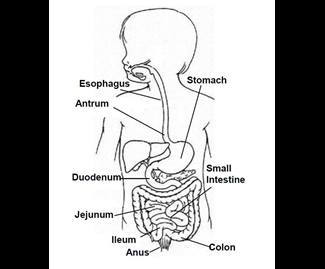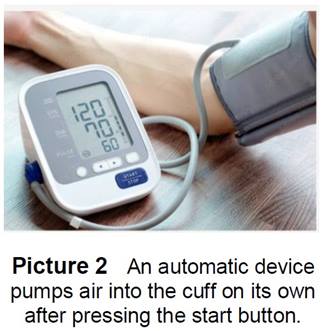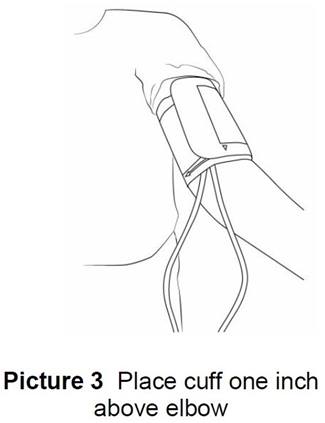Digital Blood Pressure Measurement

Blood pressure (BP) is a measure of the force of the blood against the wall of a blood vessel. Blood vessels are arteries and veins. They are tubes that carry blood throughout the body. When the heart beats, it pushes blood through these vessels. Blood pressure is a measure of the force on the walls of an artery when the heart beats and when it relaxes between beats.
- Blood pressure is written as 2 numbers, for example, 110/60.
- The systolic blood pressure (suh-staa-luhk), the top number, is the pressure of the blood against the artery walls when the heart beats.
- The diastolic blood pressure (dai-uh-staa-luhk), the bottom number, is the pressure of the blood against the artery walls between heartbeats.
- Blood pressure can change during the day. It is often the lowest in the morning. Things that can affect blood pressure are: emotions, age, medicines, activity, body size, very hot or cold air temperature, and illness, injury, or pain.
- A normal BP for one child may not be normal for another. For children under age 18 years, a normal BP is based on their height. The doctor or health care provider will tell you what is normal for your child.
Blood Pressure Devices
- Digital devices, also called monitors, will give you the systolic and diastolic blood pressures and the heart rate or pulse (number of heartbeats in a minute). There are 2 types.
- With a semi-automatic device, you will need to pump air into the cuff by squeezing a bulb (Picture 1).
- An automatic device pumps air on its own (Picture 2).


- Know which device you have and how to set it up. For all digital devices:
- Check that the cuff tubing is firmly plugged into the side of the monitor (Picture 1).
- Check the batteries. If needed, insert 4 of them into the back of the unit. Always use AA long-life batteries or alkaline 1.5-volt batteries. Do not use rechargeable batteries.
- Turn the machine on. If a battery warning appears in the display, replace the batteries.
- Make sure you have the right cuff size for your child – not too narrow or too wide. Your child’s doctor or health care provider will help you with this.
Before You Start
- Have your child rest for at least 5 minutes. They should be calm and still when you take their blood pressure.
- Some ways to calm your child are:
- A toddler can play act with the device first. They can hold the blood pressure cuff and pretend to take someone’s BP or practice doing it on a big stuffed toy.
- Someone can help hold, cuddle, or distract a child with a book or a toy.
- An infant can drink a bottle, breastfeed, or suck on a pacifier.
How to Take a Blood Pressure Reading

- Have your child rest their arm, palm facing up, where it will stay still. The BP cuff will need to be placed at about the same level as the heart.
- Put the cuff on a bare arm.
- The bottom edge of the cuff should be about 1 inch above the bend in your child’s elbow (Picture 3).
- Find the symbol or arrow on the edge of the cuff to know where to position the cuff over the artery.
- Wrap the cuff snugly. The tube(s) should hang freely toward your child’s body.
- Press the On/Off/Memory button to turn on the device.
For a semi-automatic device (Picture 1):
- Before putting on the cuff, make sure that there is no air in it. You may need to push an air release button near the bulb to let out the air.
- Put the cuff on and squeeze the bulb quickly to fill (inflate) it with air. The cuff should inflate to a number at least 30 higher than the expected systolic pressure. If your child is taking their own BP, they should grasp the bulb with the hand opposite the arm the cuff is on.
- The cuff will become tight and hurt a little, but only for a few seconds.
- The machine will beep to let you know when the cuff is inflated enough. After you hear the beep, press the air release button, and lay down the bulb. Have your child relax and sit quietly. The device will do the rest of the work.
- As the device slowly lets air out (deflates), you will see numbers change and a flashing arrow pointing down. When the device senses a pulse, a heart symbol in the display starts to flash. You will hear a beep for each heartbeat.
- When done, the display will show the systolic and diastolic blood pressures and the
heart rate. - If the machine was not able to take the BP, the display would show a flashing arrow pointing up. You will need to start over. This time, pump the bulb a little higher than
30 above what you think the systolic pressure will be. Remind your child to sit still.
For an automatic device (Picture 2):
- After you press the START button, the cuff will fill with air. The device can sense how much to inflate the cuff. It will become tight and hurt a little, but only for a few seconds.
- As the device lets air out, you will see numbers and a tiny heart symbol flashing. The flashing heart is your child’s heartbeat.
- When done, the display will show the systolic and diastolic blood pressures and the
heart rate. - If your child moved or if the cuff was not put on right, the device may show an E or error message. When this happens, repeat steps 1 and 2.
Keeping a Record
It is important to keep a record of your child's blood pressure. Use the Blood Pressure Record or write the readings down on a calendar. Take the record with you whenever your child sees their doctor or health care provider.
HH-II-213 ©4/2016, revised 8/2022 | Nationwide Children’s Hospital
